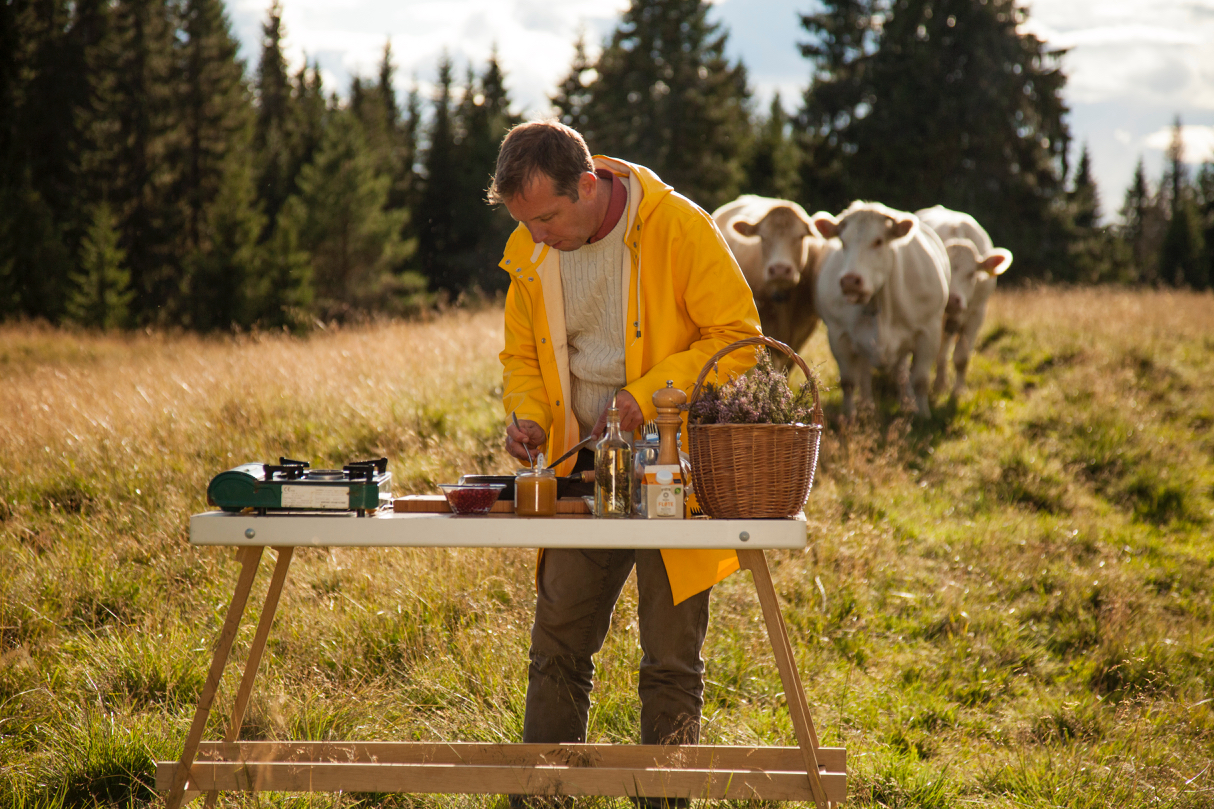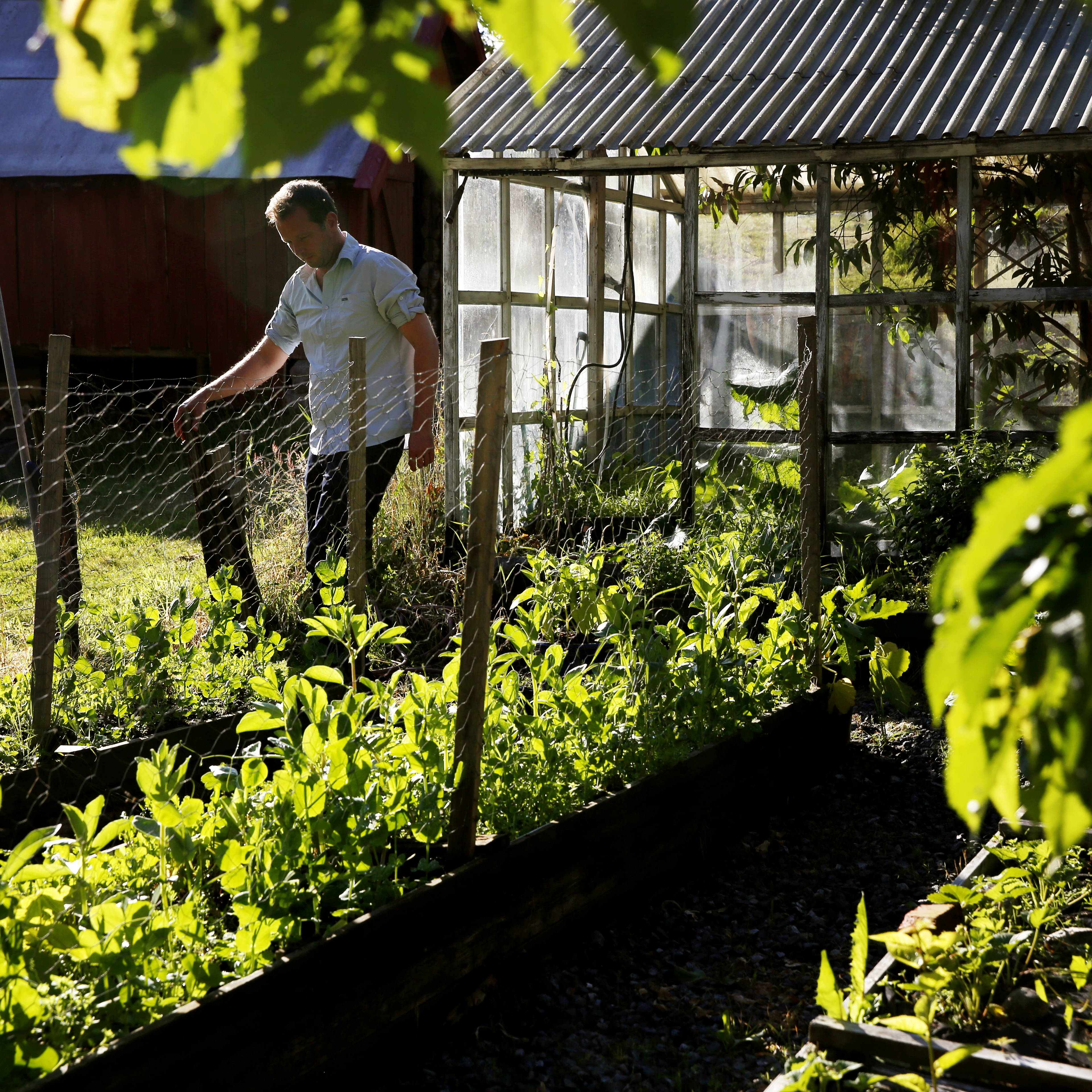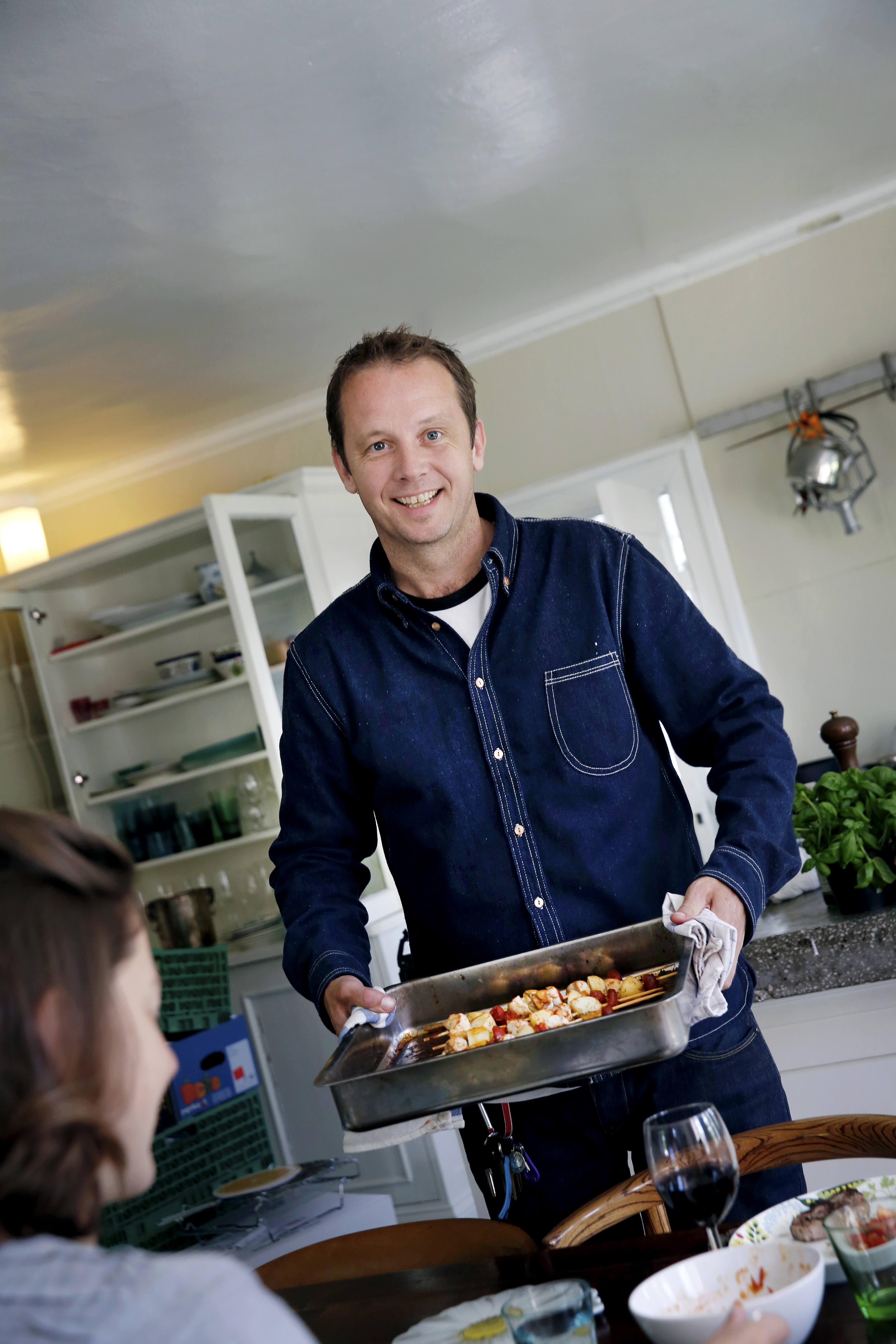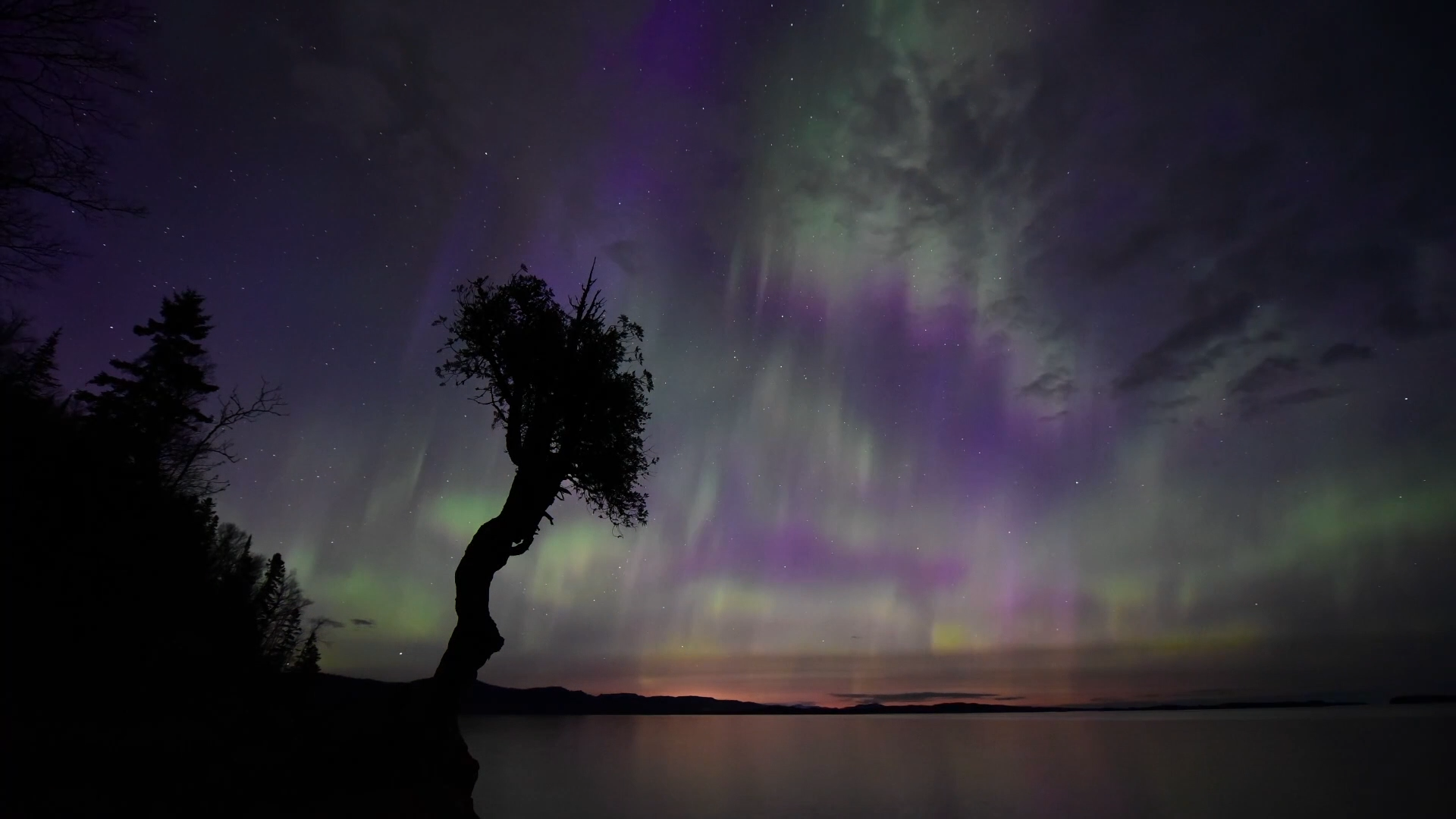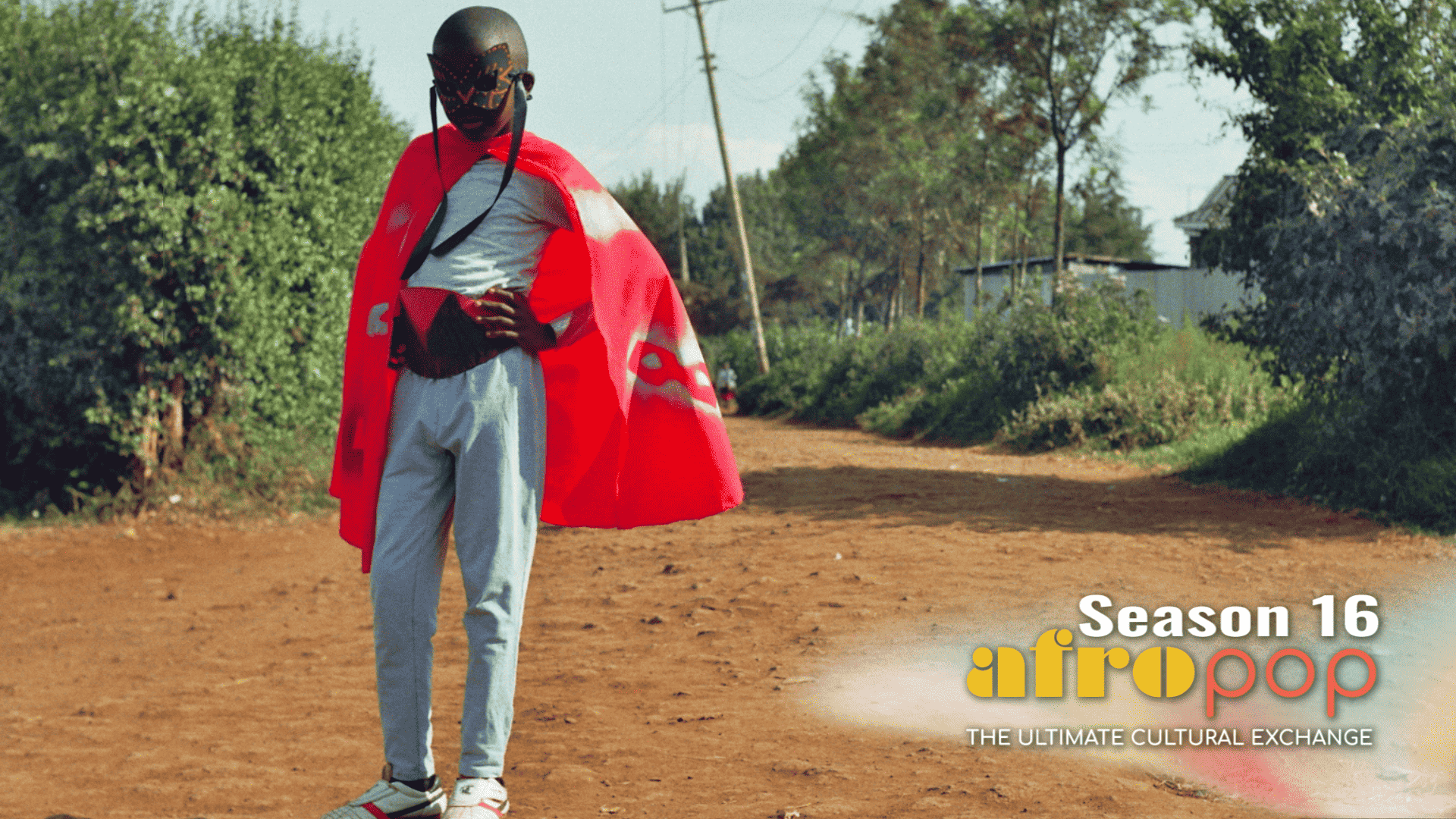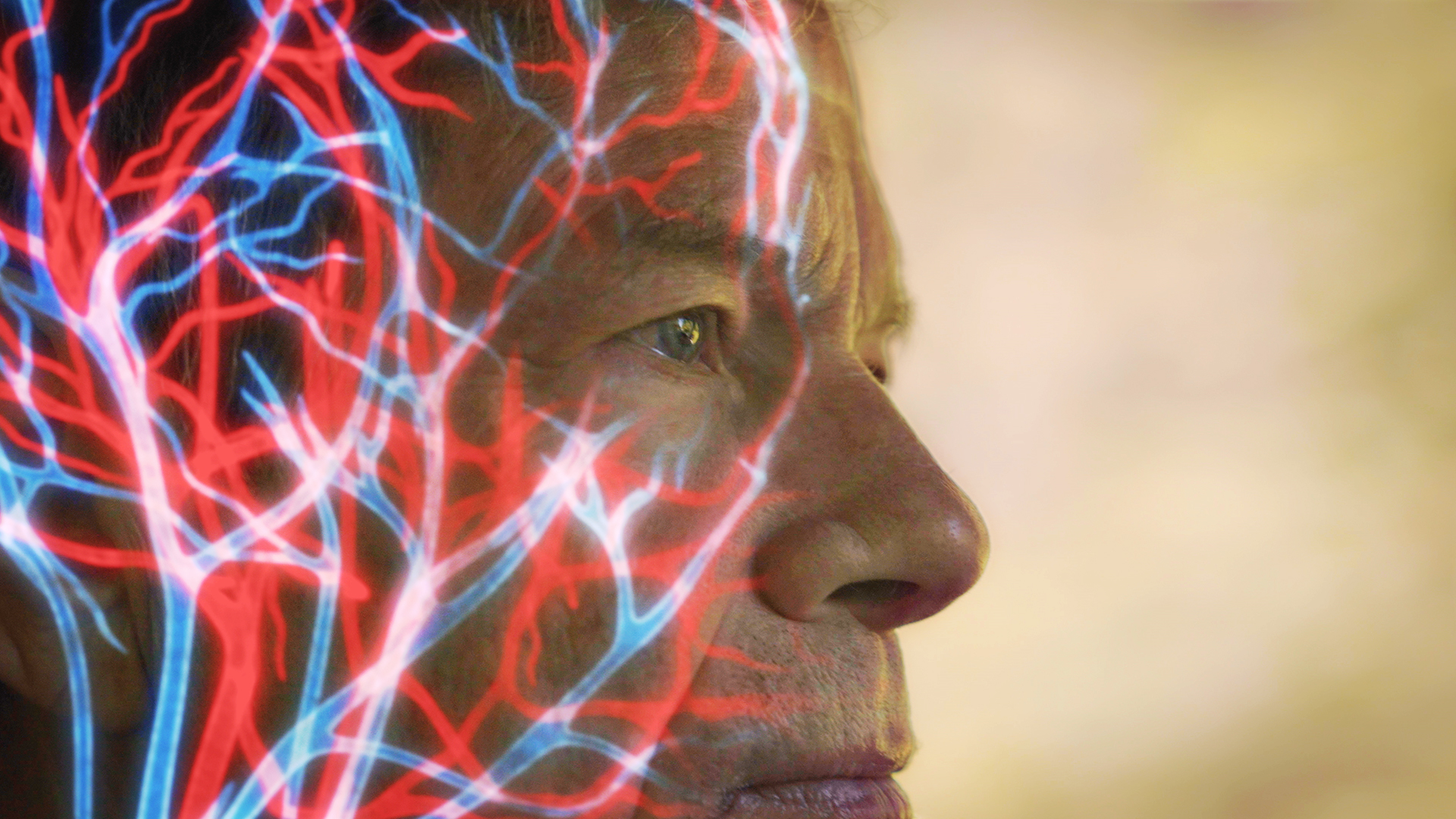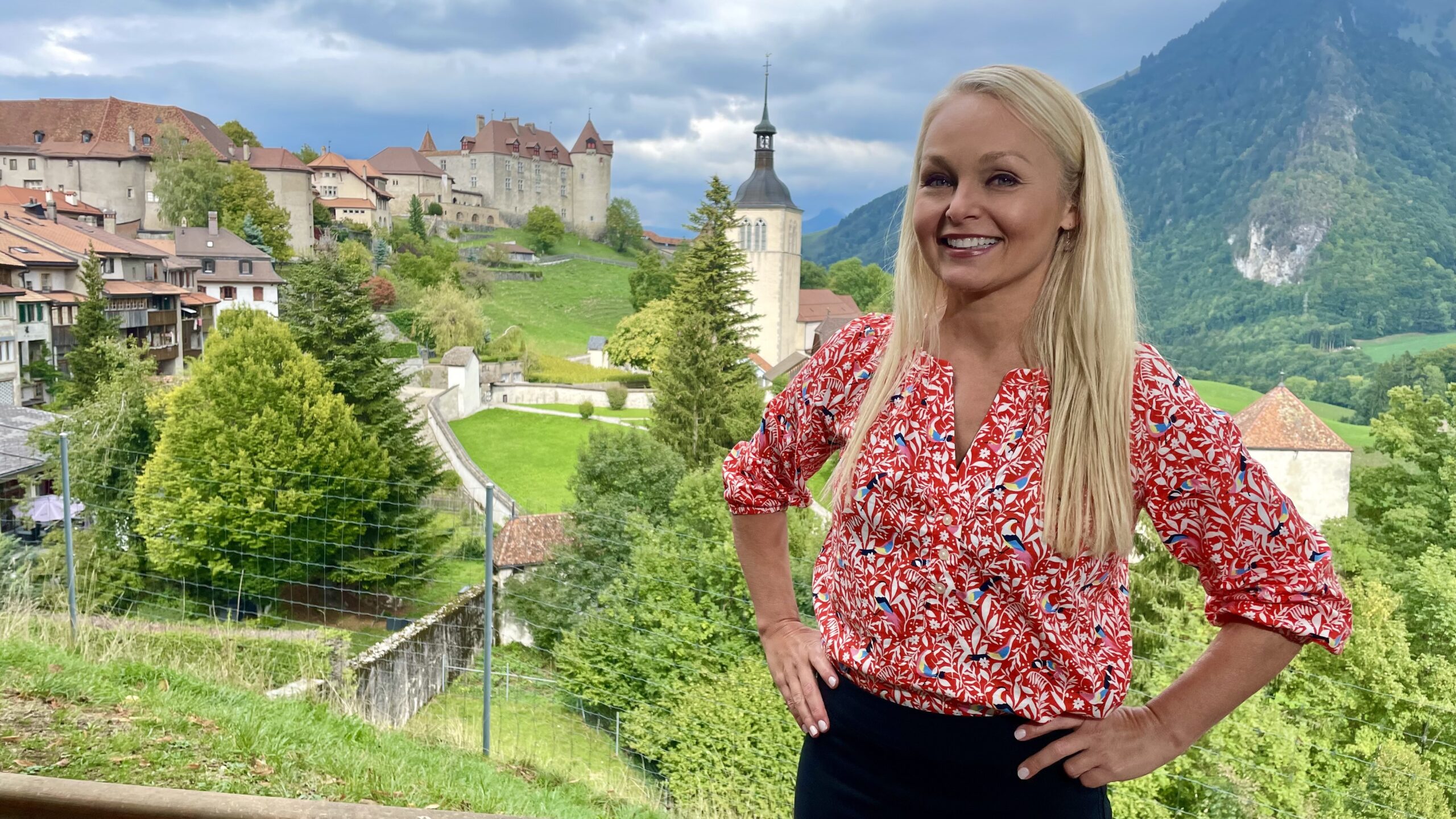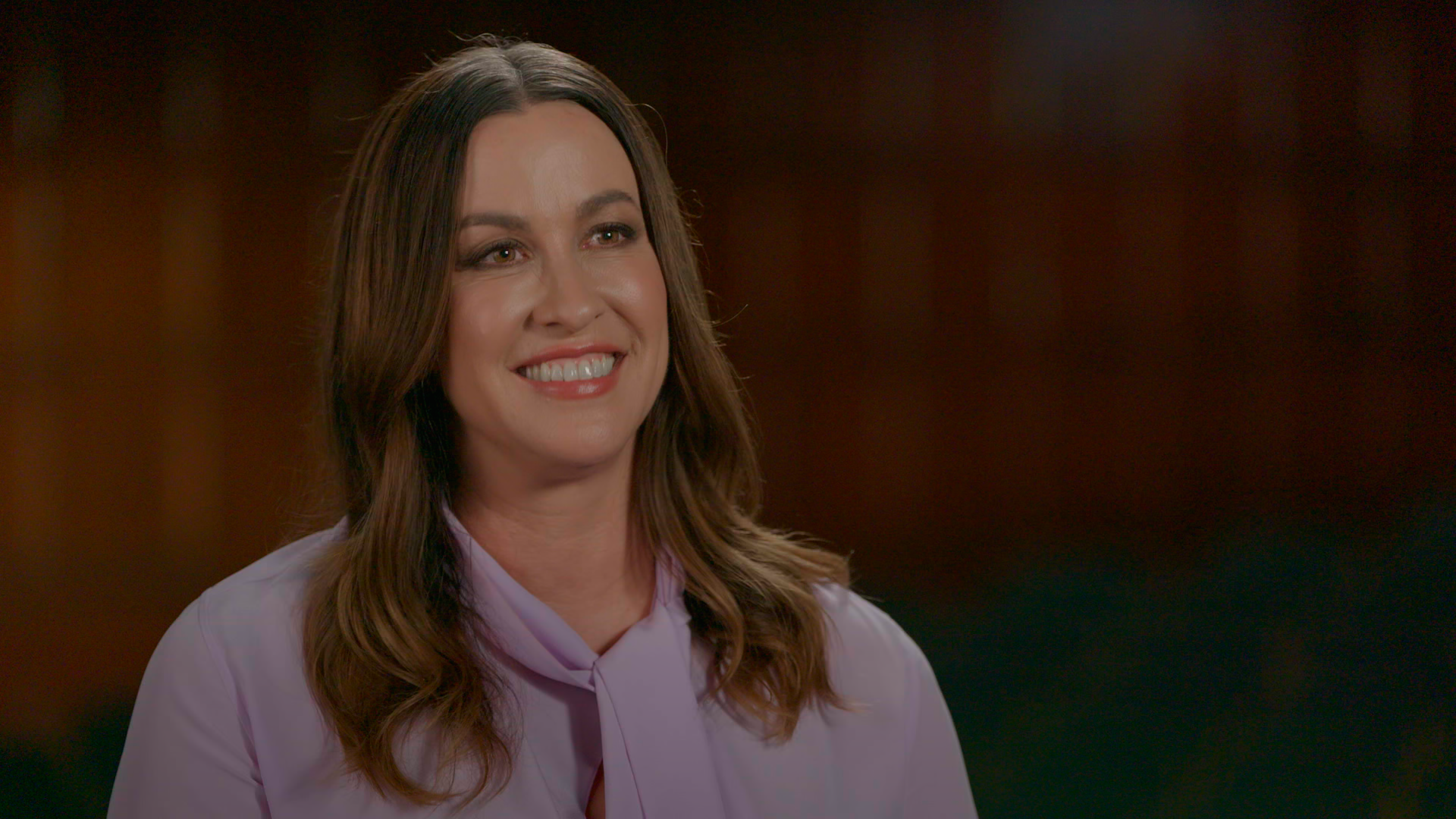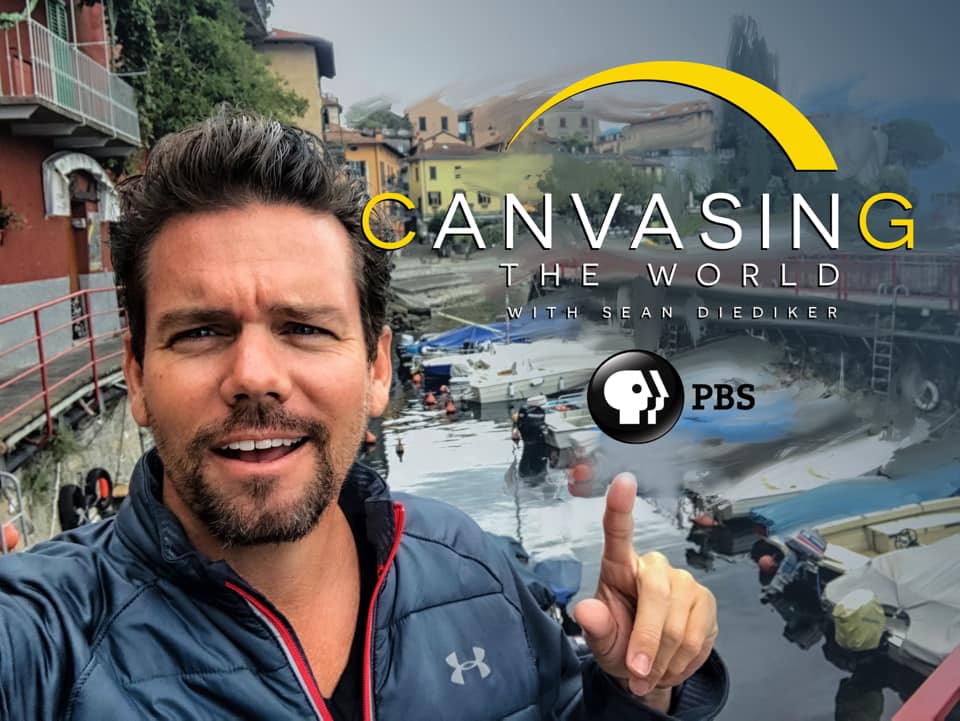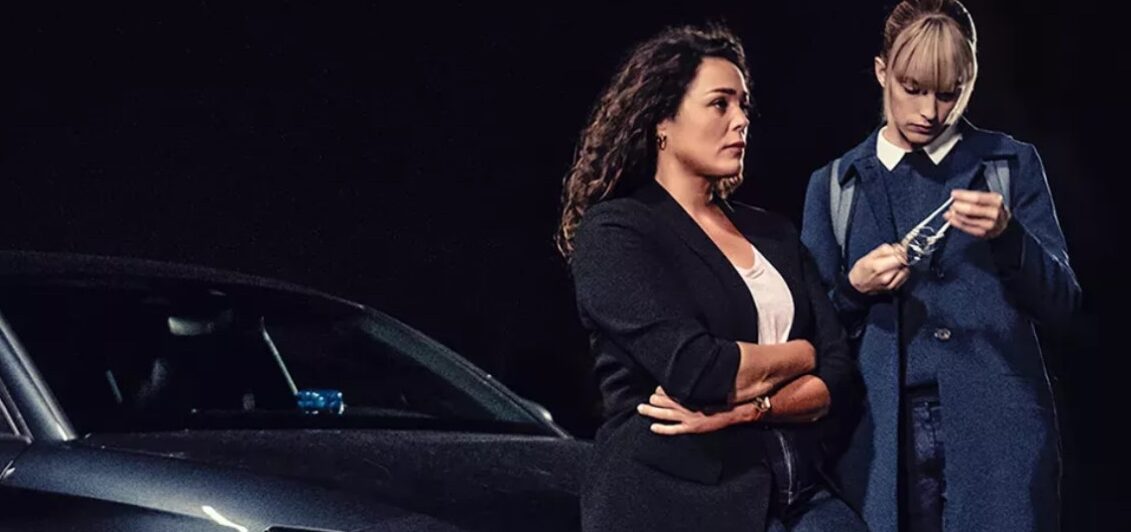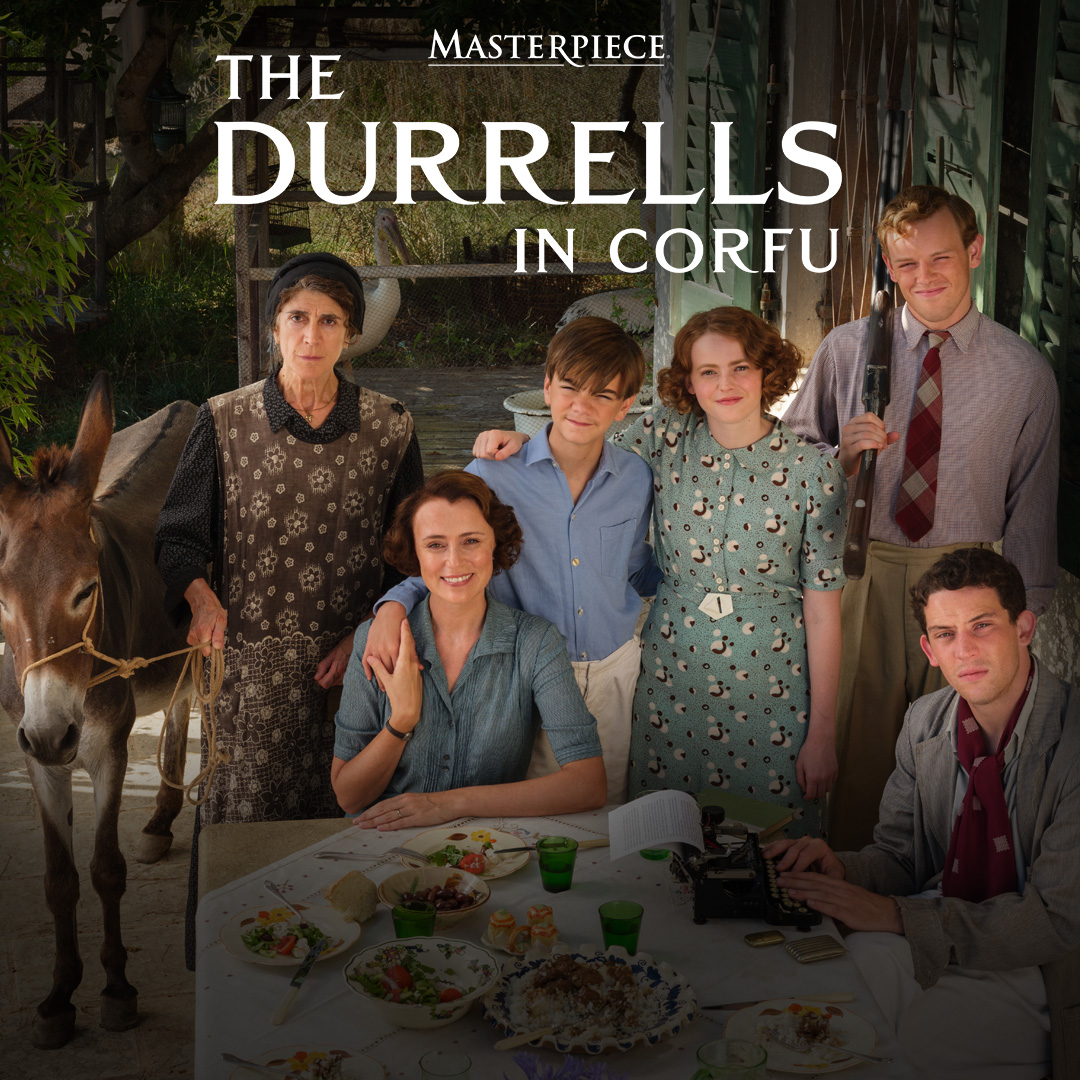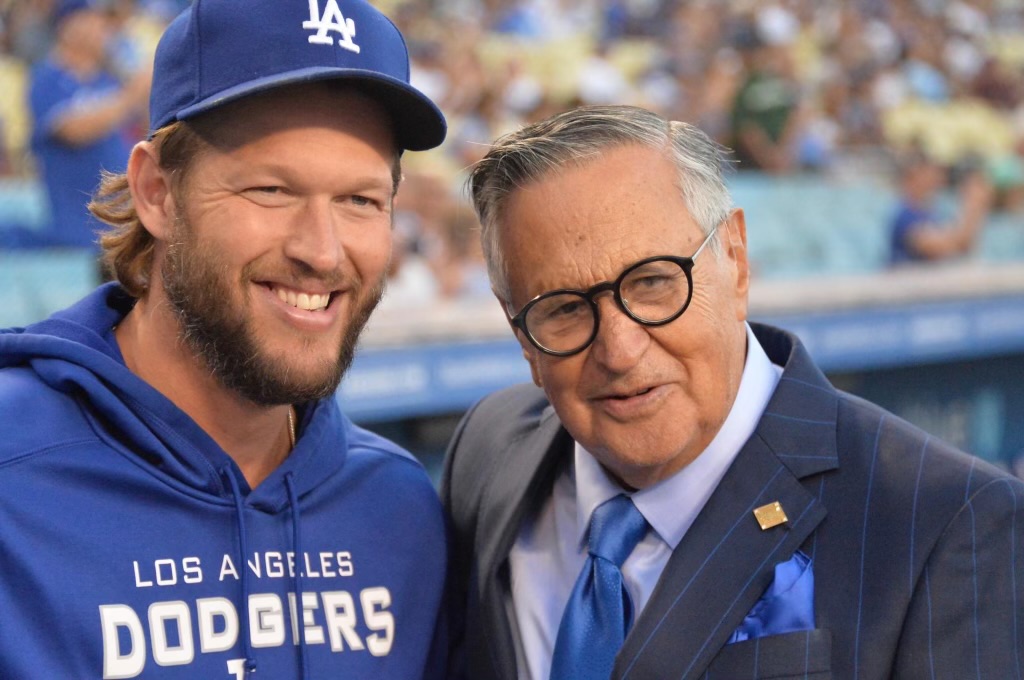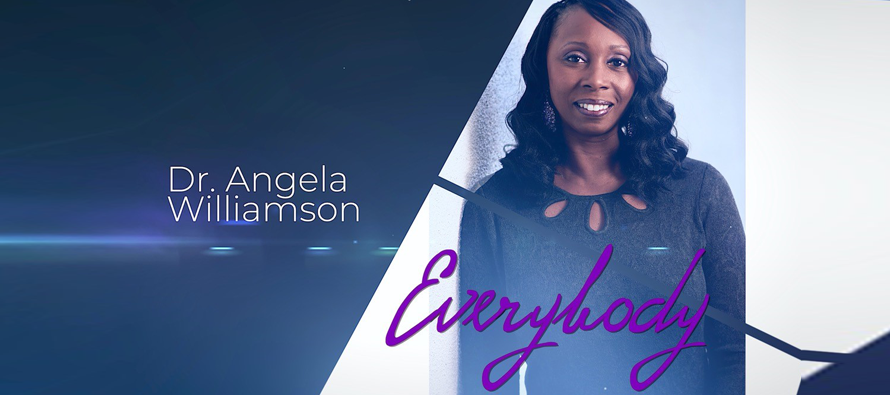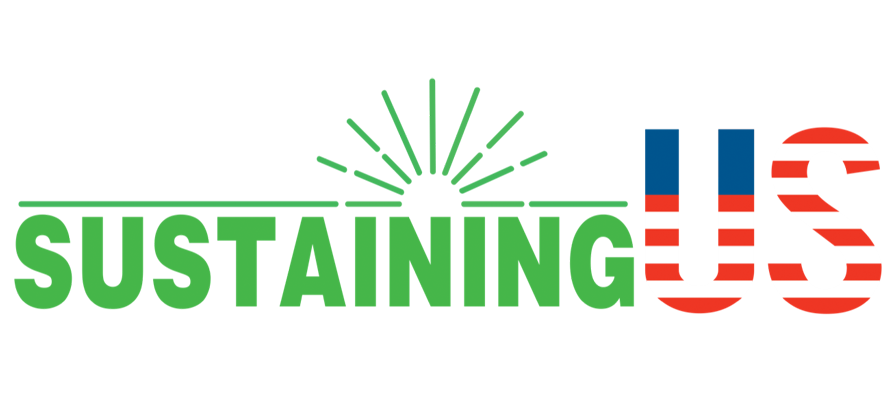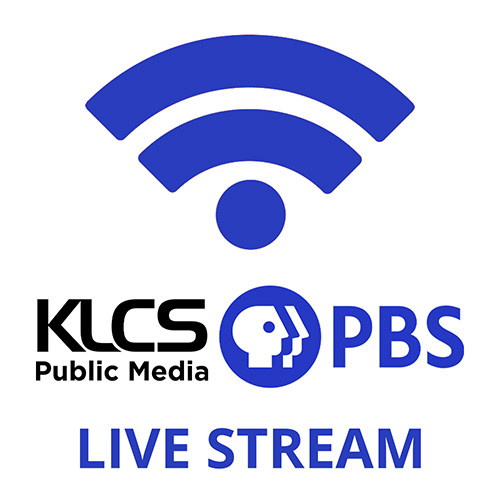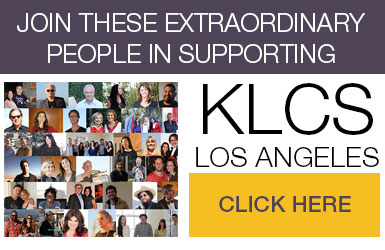Andreas Viestad is back on KLCS’ Saturday afternoon cooking block, with a new season of “New Scandinavian Cooking.” While this delightful show has seen other hosts over the years, Andreas is its most recognizable host. He always draws you in, making you want to be his best friend on these wonderful gastronomic trips in the country, or even when he’s making a simple shrimp burger on a train. It’s good to see him back at the helm cooking, literally, in nature again with beautiful backdrops that sometimes remind us of how Vikings once ate, and other times with cows and a stream right behind him. Often these episodes, with tranquil original music that’s apropos, are a peaceful escape across the world to pristine locations seemingly untouched by civilization. It’s one of the only cooking shows of its kind, where each episode is filmed in a different setting, always with nature featured prominently as a reminder of where our food comes from. Andreas talks to KLCS about the show, his most asked question from viewers around the world, as well as Julia Child’s connection to Oslo.
What’s the theme or aim with your show each season?
The aim is in short – going on an adventure. When we started oh so many years ago, when we were working on our first season, we were asking ourselves whether it was possible to have an entire season only from Scandinavia. It turned out that the more we looked, the more we found. And subsequently, we have had the New Nordic Culinary Revolution, placing Scandinavian food at the forefront of gastronomy. That has been incredibly exciting. But it has also been a reminder for me, to keep it simple. Our show is all about getting close to the ingredients, seeing where food comes from. That is not just a Scandinavian story, that is something universal. Everyone can relate to it. So each time we plan a new season it is about finding a key to that universal story.
Do you have a favorite dish on the show?
That’s a little like asking me which one of my children I like the best. But since you ask, and I am answering your questions on a fine summer morning, my answer is – thick pancakes with wild blueberries and honey. My food coordinator Erik Røed has started farming on a smallholding an hour outside of Oslo, in the middle of the grain belt. So we made pancakes with local flour, his honey and wild blueberries. Sooo good.
What was your path to being a chef and what made you originally want to cook on TV?
I have always loved cooking, that’s it. And like all food lovers I know, I like to share. And one day I had this idea, that we could do a different kind of cooking show, where we took the kitchen out to the ingredients and nature, not the other way around. And that made all the difference, standing there on a cliff, or on a boat, or on a field.
So far everyone’s had a Julia Child story, do you have a Julia story?
Well, as it happens, I was working on my first book from the U.S. market, “Kitchen of Light,” and I was sitting in the Schlesinger Library at Harvard, where many of Julia’s cookbooks are held. Many people don’t know this, but Julia spent two years in Norway just after her time in Paris, while writing “Mastering the Art of French Cooking.” In her autobiography she talks about all the bad food she had when she arrived in Oslo. “The worst food ever,” she says. That was because she ate all the food in restaurants, and the restaurant scene was not at all developed at that time. When she started to know the country and the culture, she started loving the food. She became an ambassador for Scandinavian food. And I thought that was a key, traveling around, meeting people, keeping it real, and un-French.
You’re on KLCS’ Saturday afternoon cooking block and CreateTV. Do you get feedback that your show is a guilty pleasure in a noisy world now?
Yes, I am inundated with emails from all over the U.S., and all over the world. The show is aired in about 50 different countries. I am not sure it is a guilty pleasure, though. I think it is more about finding meaning in a noisy world, connecting to some of the most important things in life, where our food comes from, how it relates to nature and culture, and the people we share it with.
What’s the most frequent question you get? And what’s your answer to it?
Two things – How the show makes people want to travel to Norway, and where I got the amazing rotisserie that I used in one of the shows. It was a Flamberge from La Cornue, in case you wonder, too.
What do you doing when you’re not on the show teaching us to cook?
I have established a culinary center for children, where we teach kids to cook, and to know how to find joy in the food that is good for them. There is a frightening amount of culinary illiteracy in the world, and we want to fight that.
What keeps your job fun for you? You can tell that you really enjoy your job teaching people about cooking in your region and in beautiful outdoor settings.
I have not been bored more than once since 1994. I get to do what I love, and I get to work with it in so many different ways. Right now, I am going to tend to an important and humbling task, weeding my kitchen garden.
When you’re in L.A., do you have any favorite places to dine?
I love L.A., and one of the things that I love is that it is changing all the time. I might feel sad that my favorite restaurant is no longer there when I return. But then there is a remarkable new place that is even better.

